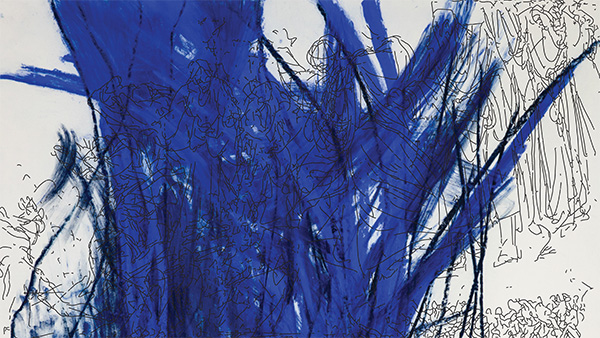Exhibition Teresa Gonçalves Lobo and Domingos Sequeira: a dialogue in time
Curated by Bernardo Pinto de Almeida
From 25 January to 28 April 2024
Tuesday to Sunday, 10h00 / 18h00
The Soares dos Reis National Museum has been sharing its collections with contemporary artists, challenging them to new perspectives and unexpected dialogues. This is the case with the exhibition of drawings by Teresa Gonçalves Lobo, which curator Bernardo Pinto de Almeida fits “into this programme, which focuses on a review of the objects in the Soares dos Reis National Museum’s collection, integrating Teresa Gonçalves Lobo’s drawings into a dialogue with works by Domingos Sequeira, the great Portuguese artist of the transition from the 18th to the 19th century.”
According to the curator, “the reason for choosing Sequeira to open a dialogue with Teresa Gonçalves Lobo’s works was that he found in both their works the same sense of the plastic and metamorphic invention of drawing which, clearly experienced in its expressive plane, accentuates the possibility of spreading out over surfaces, making the choreography of countless lines vibrate as a way of suggesting the presence of forms which, although unrecognisable in a figurative mode, nevertheless function as forms of a figuration.”
Teresa Gonçalves Lobo (Funchal, 1968), whose work began more than two decades ago, focused early on drawing as an expressive field where she has developed remarkable research. She is represented in various private and institutional collections in Portugal and abroad.
Domingos Sequeira (Lisbon, 1768 – Rome, 1837), considered to be the most talented and original Portuguese painter of his time, played a fundamental role in the development of Portuguese art in the early 19th century.
In the dialogue that is the basis of this exhibition, we can see how a similar approach to drawing and the way of scratching occurs in the works of both artists, despite the long distance in time that separates them, but whose purpose of giving birth to the form of this use of scratching brings them closer together.

